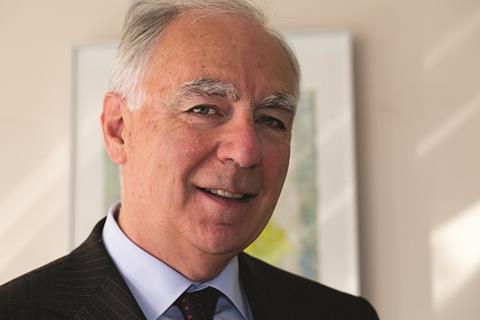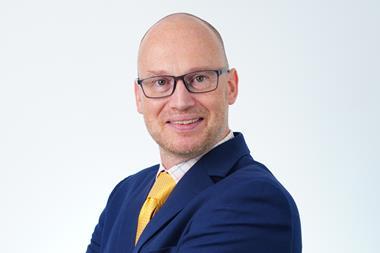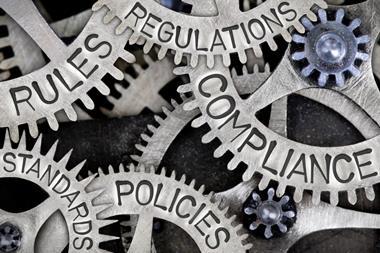The president of the French risk management association explains his vision for the future of the profession

Creative and receptive, an enterprise-wide advisor, Gilbert Canameras is a modern man of risk who represents a new breed of risk manager, a risk manager of tomorrow.
This makes him the perfect choice to spearhead a transformation in the risk discipline in France as AMRAE’s president, moving it from traditional insurance buying to holistic risk assessing that is internationally recognised, a challenge with which Europe’s risk management associations are contending.
He has already shown this is possible at a company level; having built from scratch a modern risk management function and implementing a holistic risk culture at his firm, France-based mining company Eramet, where he is director of risk.
Achieving this was no mean feat and as a seasoned professional with a risk management career spanning three decades, Canameras makes fun of the old saying ‘you cannot teach an old dog new tricks’, proving that with the right vision, anyone can modernise risk management in their company.
At Eramet, Canameras quickly established a two-tiered risk management function encompassing the traditional risk manager (the risk assessor and insurance buyer who deals with risks on a project-by-project basis) and the ‘corporate-wide’ risk advisor (who accesses and manages all risks that could affect the company).
Canameras then devised a risk assessment strategy based on the enterprise risk management principles and to support this new era of risk management, he established a committee of risk advisors, which he placed across the company’s divisions to keep a tighter grip on current and emerging threats.
The challenge he is facing at the moment, however, is far bigger. As AMRAE’s president, Canameras shares the aims of umbrella European risk management association, FERMA,
to transform the risk management practice into a profession recognised internationally.
“Risk management is changing” he says “and we need to support that change. Ten to 15 years ago, risk managers had a very narrow view, and I include myself in that. They were concerned only by industry-specific and technical risks, looking only at threats that affected their company.
“But in a globalised business world, the job of the risk manager becomes more complex. Risk travels across borders and we can no longer look solely at company-specific risks.
“We now have to take a globalised view, keep a watchful eye on all risks, including climate change and natural disasters, political risk and threats related to human resources – the types of threats that could have a global impact on business. The risk manager of tomorrow will be a conductor of risk management, providing a solid and clear vision to the board and chief executives and helping them develop a strategy for resilience.
“The risk manager of tomorrow will be a manager who sets the tone and enhances the risk culture of its company.”
Pan-European certification
AMRAE is an advocate for change and has been supporting the this by scoping out a new job description for ‘the modern risk manager’, detailed in its report Risk manager framework: a professional reference tool. It describes the modern risk manager as “receptive”, “adaptable”, “creative”, “culturally aware” and “resistant to stress”. A risk advisor, who from the top down is capable of “modifying actions in the light of a changing landscape”, who “thinks the unthinkable” and who spearheads change for the better.
But the ratio of modern risk advisor to traditional risk manager is small, with few professionals able to claim to have achieved this. “This is why a pan-European risk management certificate is essential”, he says. “It will reform the profession.”
Although there are some established risk management certificates – ARM (the Associate in Risk Management) awarded chiefly in the US and France, and the Certificate in Risk Management awarded in the UK for example – risk management associations argue that a clear and agreed standardised certificate of competence is required in Europe.
The objective of a European certificate is to create that standard. FERMA’s announcement in October last year that it was to develop a framework for this received widespread support from industry leaders in Europe and further afield, including from Canameras.
“With certification, we could have two levels of risk managers. The first level being an elementary, perhaps ‘traditional manager’ and the second level would be a risk manager who is more advanced, an expert in risk,” he says.
“Risk management is relatively new and few businesses understand what a risk advisor does. You don’t, for example, have many professionals, if any, ask what a chief finance officer is, but people still ask, ‘what is a risk manager?’. Certification could change that.”
The four pillars
FERMA’s intention is to create a certificate that does not replace current qualifications but that acts as a benchmark against which risk management competence, gained through education and experience, could be measured. These measures will come in the form of four pillars, namely: knowledge, experience, ethics and continuing professional development.
The standard for each pillar is currently being fleshed out, and to further prepare its members for the certificate’s arrival, AMRAE has established a training subsidiary to support risk management education in general.
The association’s education arm, AMRAE Formation, was established in January 2014. It offers courses that lead to the ARM or CEFAR in risk management strategies qualifications. “This subsidiary is a major step for AMRAE” Canameras says, “and is testament to our commitment to increase the skills and knowledge of risk managers”.
“Every day, I meet risk managers who are passionate about their job and who share a common goal to improve risk management so that it is recognised as a profession – not just a discipline.
“But certification is not just about gaining recognition. The risk landscape is constantly evolving and risk managers are dealing with more complex risks. One of the best ways to improve the discipline is through educational development and we at AMRAE are supporting this effort in the creation of AMRAE Formation.”
It is this ‘passion’ and camaraderie between the risk management associations, particularly in improving professional development that Canameras is most proud of having been involved in before his term as president ends in spring 2015. To him, risk management associations such as AMRAE and FERMA are at the heart of modernising the risk discipline; where top risk experts take on a second full-time job to ensure the myriad of risk reports, professional guidance and educational tools are available to enhance the skills and knowledge of all their members.
Canameras put it succinctly in his speech following the announcement of his presidency in 2011: “When I joined Eramet, I did not know much about the world of insurance and therefore immediately became a member of AMRAE”. Looking back on those years, he concludes, “AMRAE has been a great resource and has helped me become the risk manager I am today.” Kin Ly
What are the top three risks in the mining industry?
“The number one threat for the mining industry is volatile market conditions. Mineral activity is dependent on the global economy, more precisely on China’s economy, which is a big influencer currently. China is consuming a significant amount of minerals; in fact half of the world’s iron is consumed by China. Risk managers in the mining industry are very cautious about this and are keeping a close eye on the country’s economy.
“The second big threat is political risk. A vast amount of the world’s mining activity, particularly iron production, comes from emerging economies and regions that are still suffering from political unrest. This of course will have a huge effect on trade.
“The third is a risk that not only affects the mining industry but also multinational companies, namely natural disasters. The impact of a natural catastrophe extends beyond people, it has a huge effect on the economy. We saw this in Thai floods in 2011. The floods had devastating consequences for the supply chains, several businesses loss millions as a result of business interruption. The upshot is that businesses and risk managers learnt a lot from this incident.”
CV
l 1980: joined French construction company, Spie Batignolles, and risk-managed large projects such as industrial plants
l 1989: promoted deputy chief finance officer at SPIE BATIGNOLLES
l 1996-2000: director of the treasury and trade finance, SCHNEIDER
l 2001-10: cash financing and Insurance Manager, Eramet Group
l 2010: director of finance and risk management, Eramet Group
l Member of AMRAE since 2002
l 2011:president AMRAE
l Master of Business Law II-Assas Paris and DEA in political studies, specialising in international relations




















No comments yet